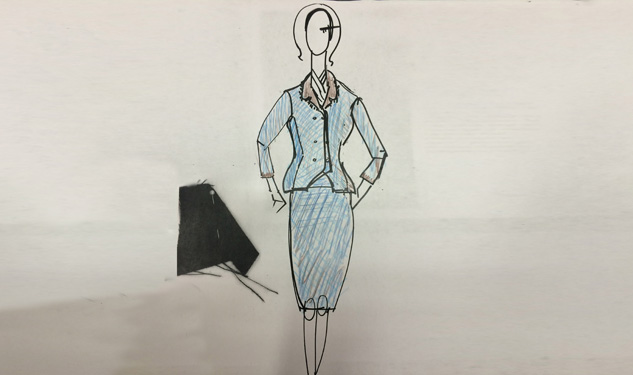
- Fashion
Creating The Fashion of Sex
Lizzy Caplan and Ane Crabtree talk about the costumes of Masters of Sex
Ane Crabtree has dressed some of the icons of TV. And as costume designer on shows like The Sopranos, Luck and Rectify she has been responsible for creating iconic looks for some of television’s biggest contemporary characters. She has dressed actors like Nick Nolte, Dustin Hoffman, Helen Hunt, Antonio Banderas and Sarah Jessica Parker and she is the woman behind the fashion look of Showtime’s Masters of Sex. The show examines the relationship of William Masters and Virginia Johnson, as the pioneering researchers who delved into the nature of human sexuality on the backdrop of America’s incipient sexual revolution. What we see actors wearing isn’t accidental. An entire department headed by Crabtree is dedicated to finding just the right piece, not only for the leads, but also for the extras that fill the background of the scenes too. We spoke to her about the focus and effort that goes into making the outfits seamless within the scene.
The costumes go a long way in creating the look that informs the character, which in turn determines how Lizzy Caplan inhabits the body of Virginia Johnson. Like a lot of actresses, Caplan feels character is created not only by the words and actions, but by what is worn, or in the case of the Showtime series, not worn. “When I first get the script I read it quickly to get the energy and psychology of the piece. Then I read it again to get each character’s role in the scene. I read it a third time to think of it visually. I meet with the creator of the show to make sure I’m in keeping with what the writer saw when she wrote the piece, so we create one song.” “Clothing really informs the character,” added the actress. “I’m lucky to have the genius of our costume designer, and I don’t use ‘genius’ lightly. Her brain is meticulous. At the beginning of season one, we talked of dressing my character, Virginia Johnson, who was an actual person not just a writer’s creation, like a missile. It was the late 50s, there was this idea of space. She doesn’t have a lot of money, she wants to be taken seriously, yet the silhouette was form fitting and sexy. It’s been very helpful to wear the horrific undergarments every single day. The long line bra is a bit like a corset with the strange shaped cone breasts and the very tight girdle. Add in the ‘clip’ stockings to the garter belt, which changes how you move, and it helps in switching me over from who I am while walking around in the world, to becoming Virginia Johnson.”
“I’m a bit of a control freak,” admits Crabtree, who creates entire portfolios for her team to work from. “I do the day players, the speaking roles, principals, and although we have someone who fixes the extras, they are given the research by me. We do large departmental meetings on the tone and feel of everything – especially historically. It’s almost like homework at the end of the night. They show me photographs. After I’ve done the principals and others, I move onto the extras’ book. It’s an on-going process that takes all your time for six months. Because Masters of Sex is a historical show, extras can’t really use their own clothing. We ask men to bring gents crew neck T’s, then we do the finishing touches to make it period. If they have shoes, jewelry or an item from their relatives – something an aunt or grandmother gave them – and it fits, we’ll use it.”
For all the meticulousness Crabtree is open to collaboration. “You have to be flexible because things change. A scene gets rewritten or an actor will feel a certain way about it. At the end of last season (season two), I had a three-piece suit for Lizzie to wear in a pivotal scene. It was a sartorial idea of a very fitted tight wool sleeveless top with a tight matching pencil skirt with the raw edge shown on purpose. Her suggestion was to feel more vulnerable; she should have her arms show. To have more skin seen, so that she was psychologically stripped bare. The suit became a two piece suit and the scene became better for it.”
Margaret Gardiner

